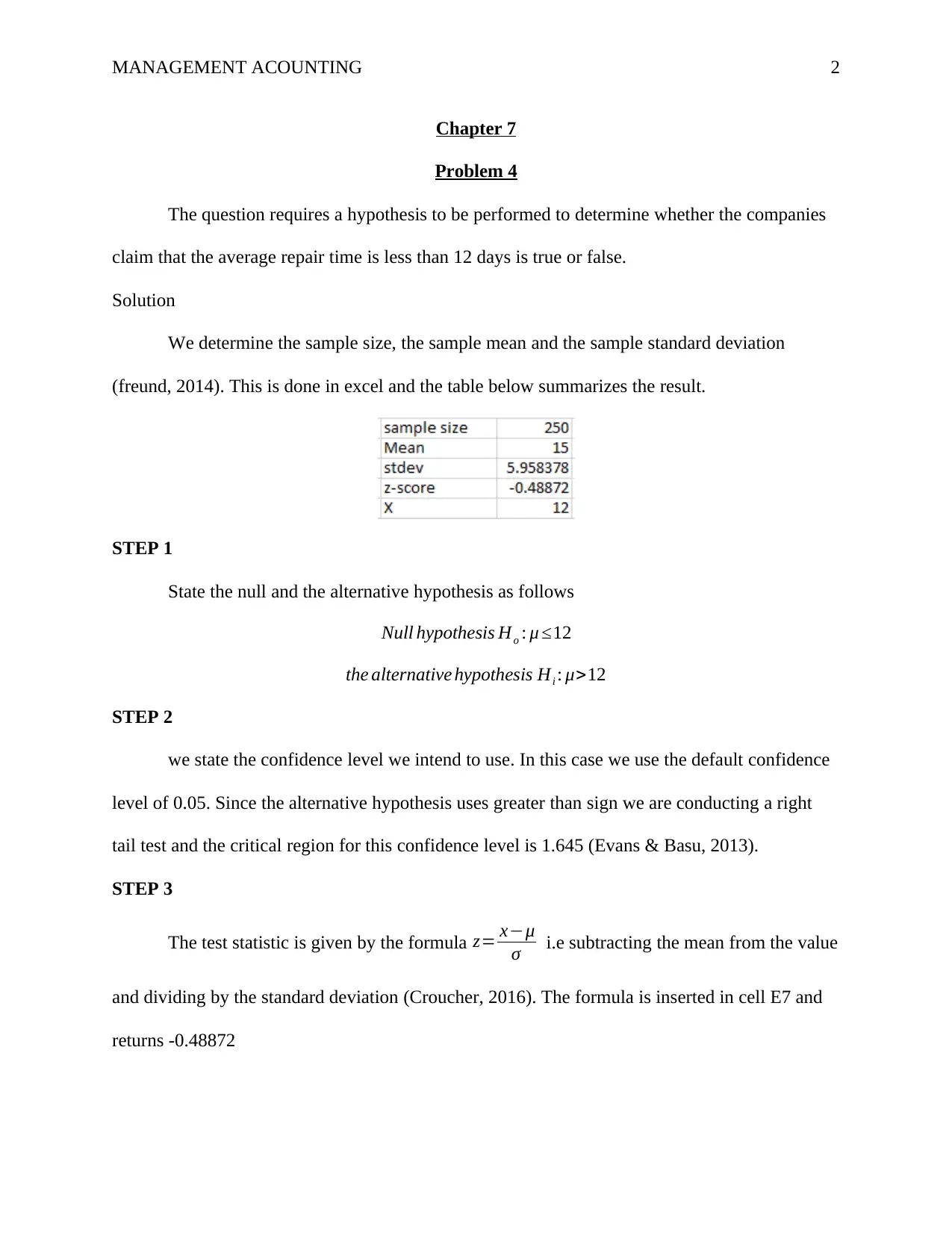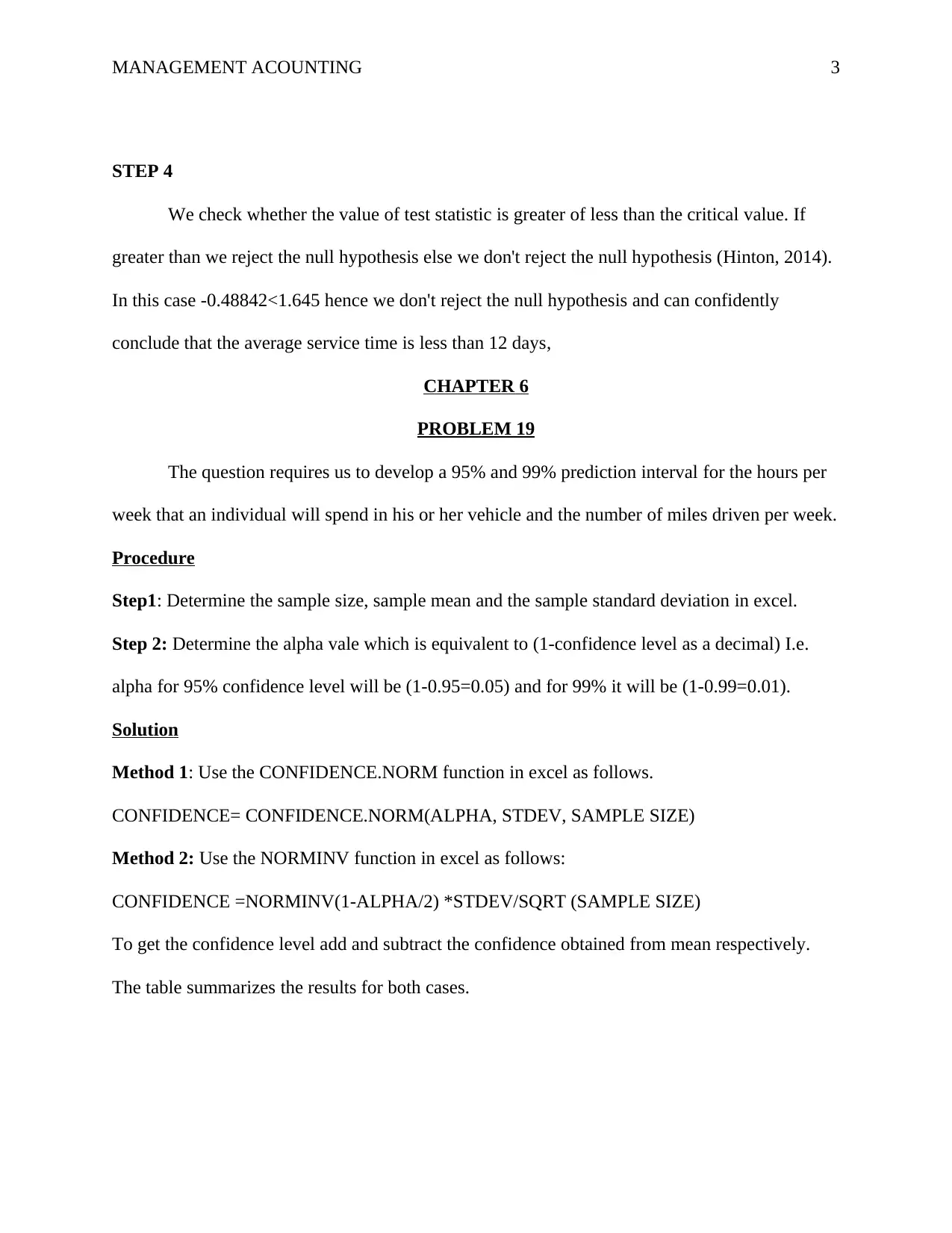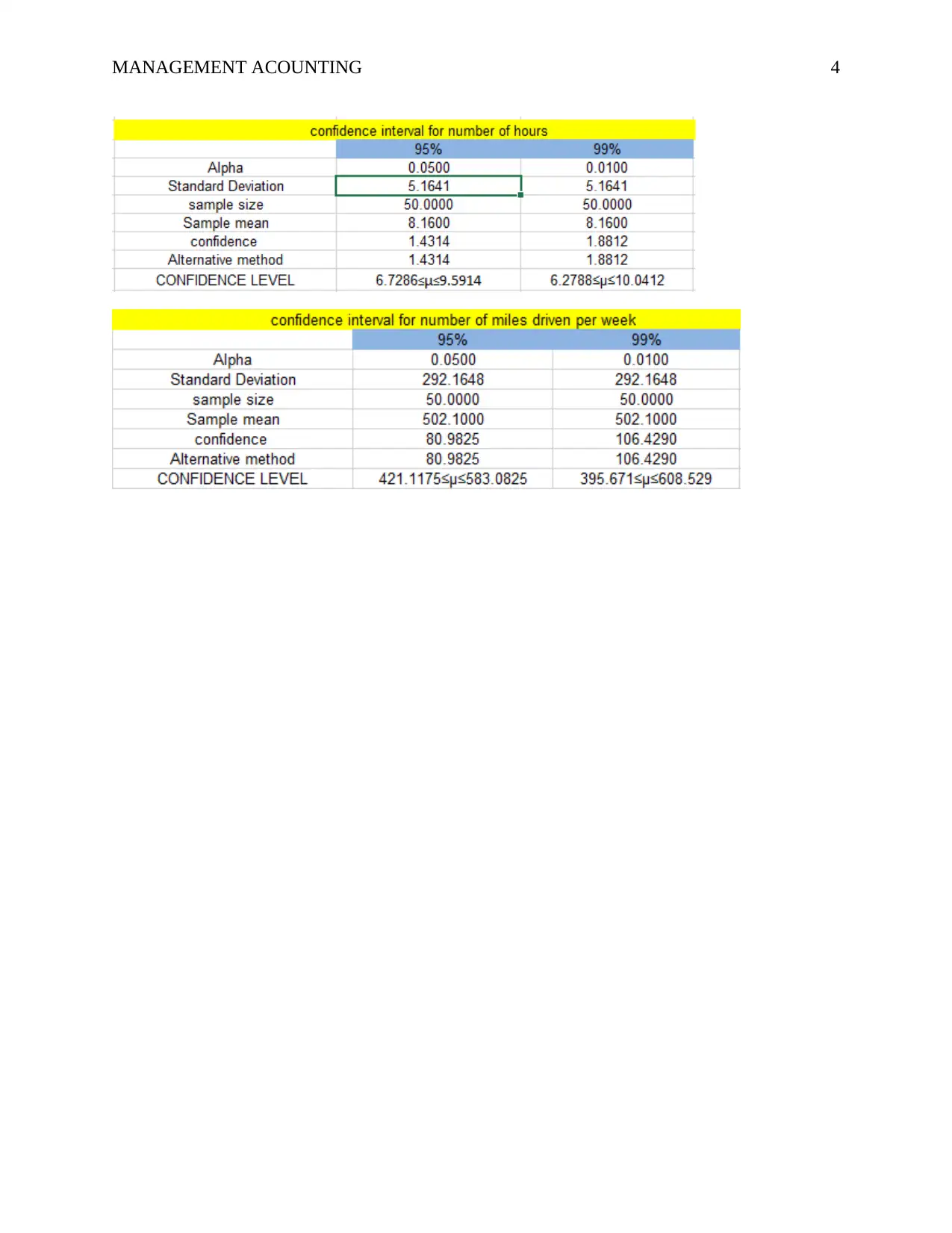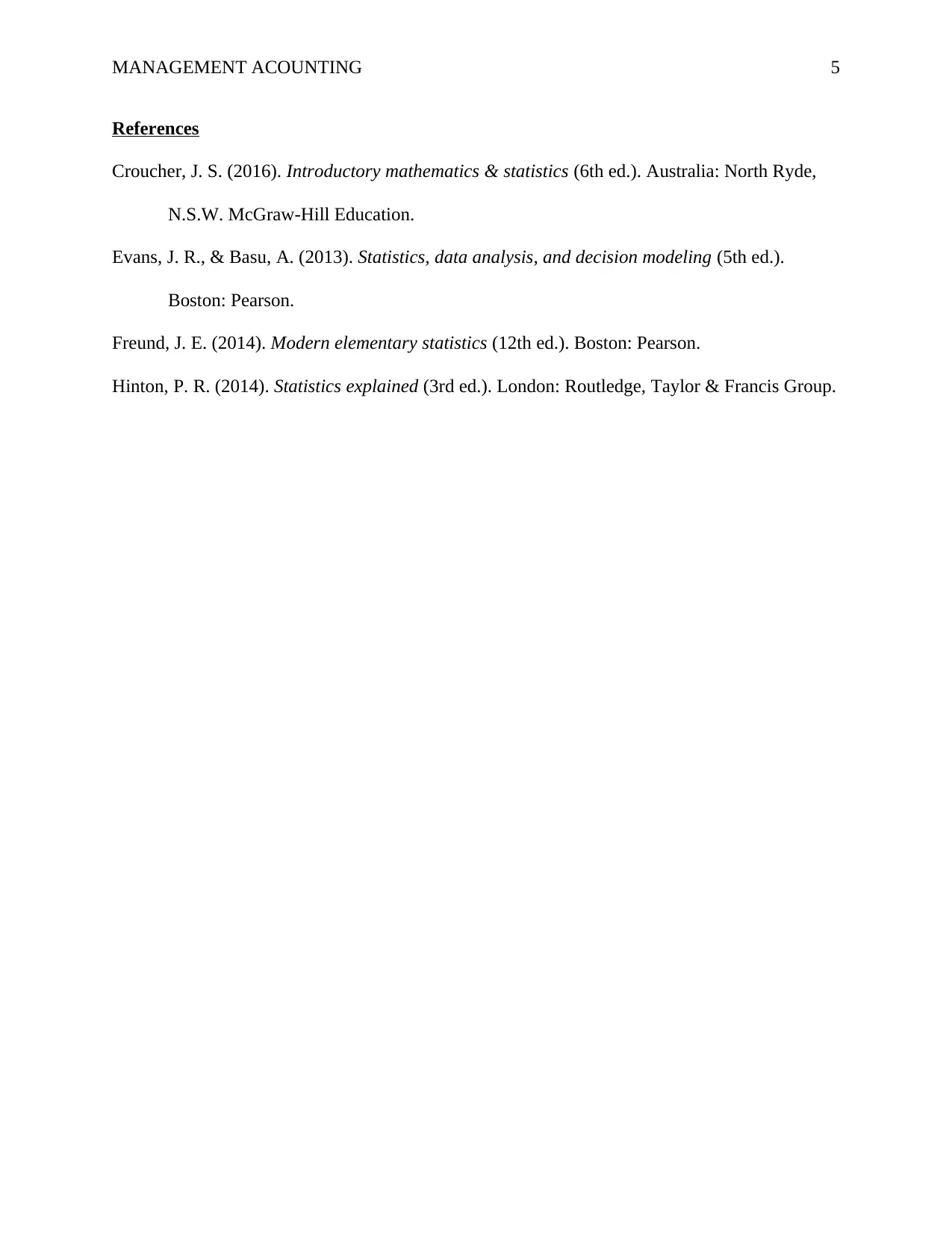Statistical Analysis Assignment: Chapters 6 and 7 Problem Solving
VerifiedAdded on 2022/11/26
|5
|539
|169
Homework Assignment
AI Summary
This document presents solutions to a statistics assignment focusing on hypothesis testing and confidence intervals. The assignment addresses two key problems: Chapter 7, Problem 4, involves testing a hypothesis about average repair time using sample data and determining whether the claim that the average repair time is less than 12 days is true or false, including the use of excel to determine the sample size, mean and standard deviation, and test statistics. Chapter 6, Problem 19, requires the development of 95% and 99% prediction intervals for the hours per week an individual spends in their vehicle and the number of miles driven, also including the excel implementation using the CONFIDENCE.NORM and NORMINV functions. The solutions detail the steps, formulas, and excel functions used to arrive at the statistical conclusions, providing a comprehensive analysis of the given data sets.
1 out of 5












![[object Object]](/_next/static/media/star-bottom.7253800d.svg)